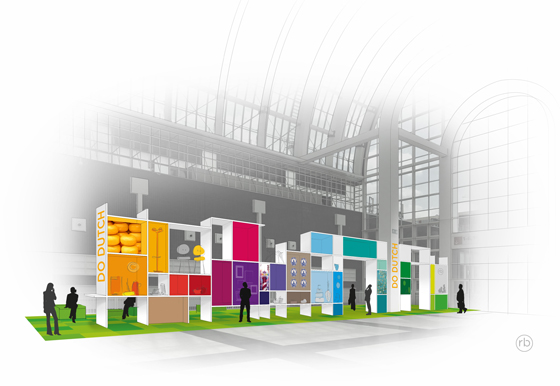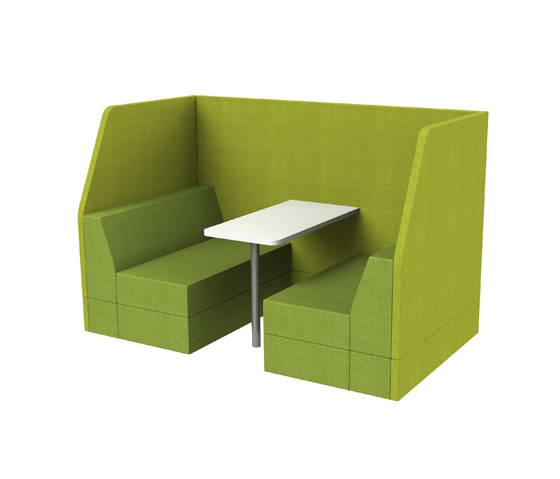Do Dutch: the Netherlands’ special exhibition at Ambiente 2018
Brand story by Simon Keane-Cowell
Zürich, Suisse
06.12.17
Next February’s edition of AMBIENTE – the leading international consumer-goods trade fair in Frankfurt – sees award-winning product designer Robert Bronwasser curate a recontextualisation, and celebration, of everyday Dutch design culture.
Amsterdam-based industrial designer Robert Bronwasser: “One of the characteristics of the Dutch identifiable in Dutch design is a very proactive attitude. We go beyond thinking about what design can do. We act”

Amsterdam-based industrial designer Robert Bronwasser: “One of the characteristics of the Dutch identifiable in Dutch design is a very proactive attitude. We go beyond thinking about what design can do. We act”
×As the political map of Europe hots up, with a raft of regions across the continent pushing for greater autonomy, there’s a little part of Frankfurt that’ll be going distinctly Dutch for a few days next February.
The 2018 edition of Ambiente, the leading international consumer-goods trade fair, sees the turn of the Netherlands to set up its stall as partner country, the latest in a series of national showcases inviting fair-goers to engage with a particular design culture via a carefully curated product presentation – adding value to their visit, as well as perhaps questioning their preconceptions.
Architonic caught up with award-winning Amsterdam-based product designer Robert Bronwasser, curator of the ‘Do Dutch’ exhibition at Ambiente, to discuss its concept, as well as the contours of Dutch design culture and identity more generally.
With the Netherlands partner country at the 2018 edition of Ambiente, the Do Dutch special exhibition, curated by Robert Bronwasser, takes the form of a large, architectural cabinet, situated in a green open landscape

With the Netherlands partner country at the 2018 edition of Ambiente, the Do Dutch special exhibition, curated by Robert Bronwasser, takes the form of a large, architectural cabinet, situated in a green open landscape
×What's the concept, in brief, for the Netherlands' partner-country presentation at next February's Ambiente?
A geometric and architectural cabinet placed in a green, open landscape provides the structure for a presentation of typical Dutch products and design. These are creatively conceptualised and ‘framed’ to tell a provocative, abstract and somewhat amusing story. The result is a ‘Gesamtkunstwerk' (total work of art) that’s iconic for the Netherlands, but also an inviting and inspiring place to visit during the Ambiente fair.
Do Dutch. As opposed to Go Dutch. What's the significance of your choice of verb? Are you emphasising the notion of making/creating?
Do Dutch refers to the Dutch mentality and to our creativity. One of the characteristics of the Dutch, I believe, that’s also identifiable in Dutch design is a very proactive attitude. We go beyond thinking about what design can do. We act.
Do Dutch is conceived of as a presentation of typical Dutch products and design, reframed to tell a compelling and at times amusing story. The exhibition promises to inspire fair-goers, perhaps challenging their preconceived notions

Do Dutch is conceived of as a presentation of typical Dutch products and design, reframed to tell a compelling and at times amusing story. The exhibition promises to inspire fair-goers, perhaps challenging their preconceived notions
×Is it possible to say what Dutch design is? Or is perhaps any attempt to define design along national lines, an impossible exercise?
For me, Dutch Design primarily means a mentality, a typical way of thinking and doing. What Dutch design really does is dare to leave the beaten path, dare to experiment, and to look at shape, function and meaning in a new way. It’s a mentality anchored in our culture.
For centuries, the Dutch have tried to shift boundaries and we have been open to new experiences. I think that by creating our own country we have been able to tackle problems and come up with innovative ideas. In addition to our constant battle against water, the fact that so many people live in a very small area makes it necessary to think about smart and sustainable solutions in urban planning, architecture, infrastructure and design.
We like to think outside the box and find solutions from a different perspective. This mentality can also be found in Dutch design; it’s experimental and innovative, questions the function of a product and is always looking for new solutions.
Robert Bronwasser’s collaborations with such furniture brands as Palau (top: Bricks Work seating) and Cascando (above: Pillow Space room-divider) often result in products characterised by a formal and chromatic friendliness

Robert Bronwasser’s collaborations with such furniture brands as Palau (top: Bricks Work seating) and Cascando (above: Pillow Space room-divider) often result in products characterised by a formal and chromatic friendliness
×What are the strengths and weaknesses of Dutch design culture, would you say?
The strengths are its creativity and ability to think differently, turning ideas into visually strong concepts. Dutch design culture is also very present internationally; we know how to tell a story and draw attention to it.
One weakness is that Dutch design often focuses too much on the concept. I believe design is not just about research, addressing problems and designing good-looking solutions, it’s about making it work and bringing it to the market. The gap between design, industry and users/consumers is sometimes too big.
Should the Dutch be rightfully proud of their design education system? What's different about the way design is taught in The Netherlands?
Right now we have many design schools in the Netherlands, all focusing on different aspects of design. So it’s impossible to give a detailed answer. But all design educations have a very strong focus on current societal themes and not just creating design. The fact that so many young designers are graduating on themes like social impact and sustainability, and using technology to create new solutions, is very promising. I think in general design schools in the Netherlands offer a lot of freedom to explore all aspects of design and to try to find your personal focus.
The Circa smart alarm clock and Qwic electric scooter form part of an extensive product portfolio that testifies to Robert Bronwasser’s professional mission: to put a smile on everyday users’ faces

The Circa smart alarm clock and Qwic electric scooter form part of an extensive product portfolio that testifies to Robert Bronwasser’s professional mission: to put a smile on everyday users’ faces
×Can you give us a sneak peek of what visitors to Do Dutch might see in terms of actual content?
In Do Dutch, I wanted to show the Dutch mentality and creativity. Dutch Design, as everyone knows, is of course iconic – but Do Dutch arranges products differently from how they are presented at Ambiente or used on a daily basis. So, in this presentation, I wanted to highlight everyday products from Dutch manufacturers and designers by placing them in a new context. I also wanted to include work by young designers who focus on those important themes I mentioned, like sustainability and social impact.
And what's your favourite piece of Dutch design – from any discipline?
That’s a very tough question. I don’t think I have a real favourite piece, to be honest. For me Dutch design is, as I said, often too conceptual. As an industrial designer, I like real functional and useful products.
But if I had to name a couple of Dutch designs, I would say Rietveld’s ‘Crate chair’ because of its simplicity and its DIY concept. I also really love the 250 guilder banknote – ‘The Lighthouse’, designed by Ootje Oxenaar. And the Dutch furniture brand Pastoe is also one of my favourites. The brand is over 100 years old and has a long tradition in making simple, but very well balanced and functional, furniture.
© Architonic










